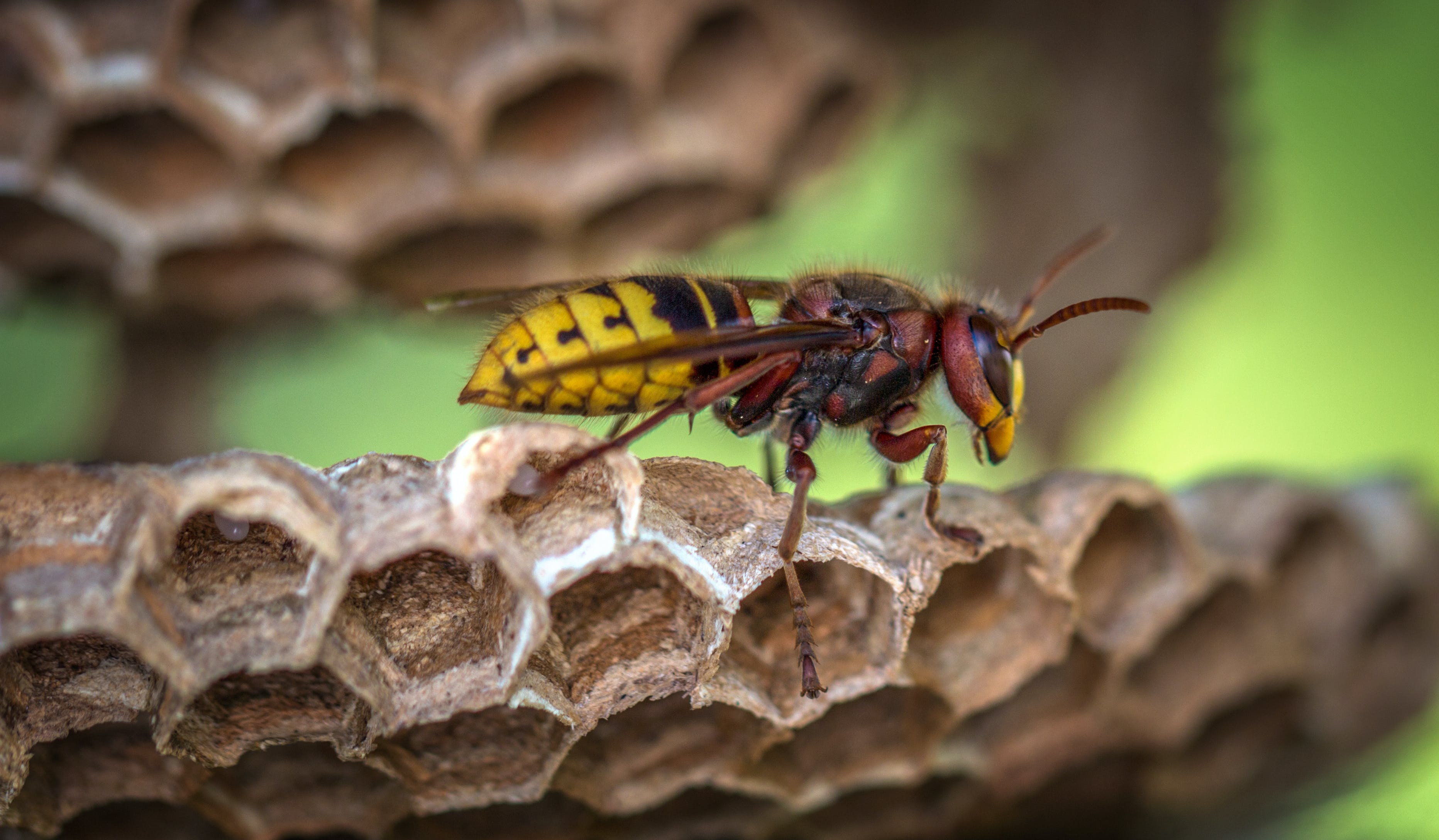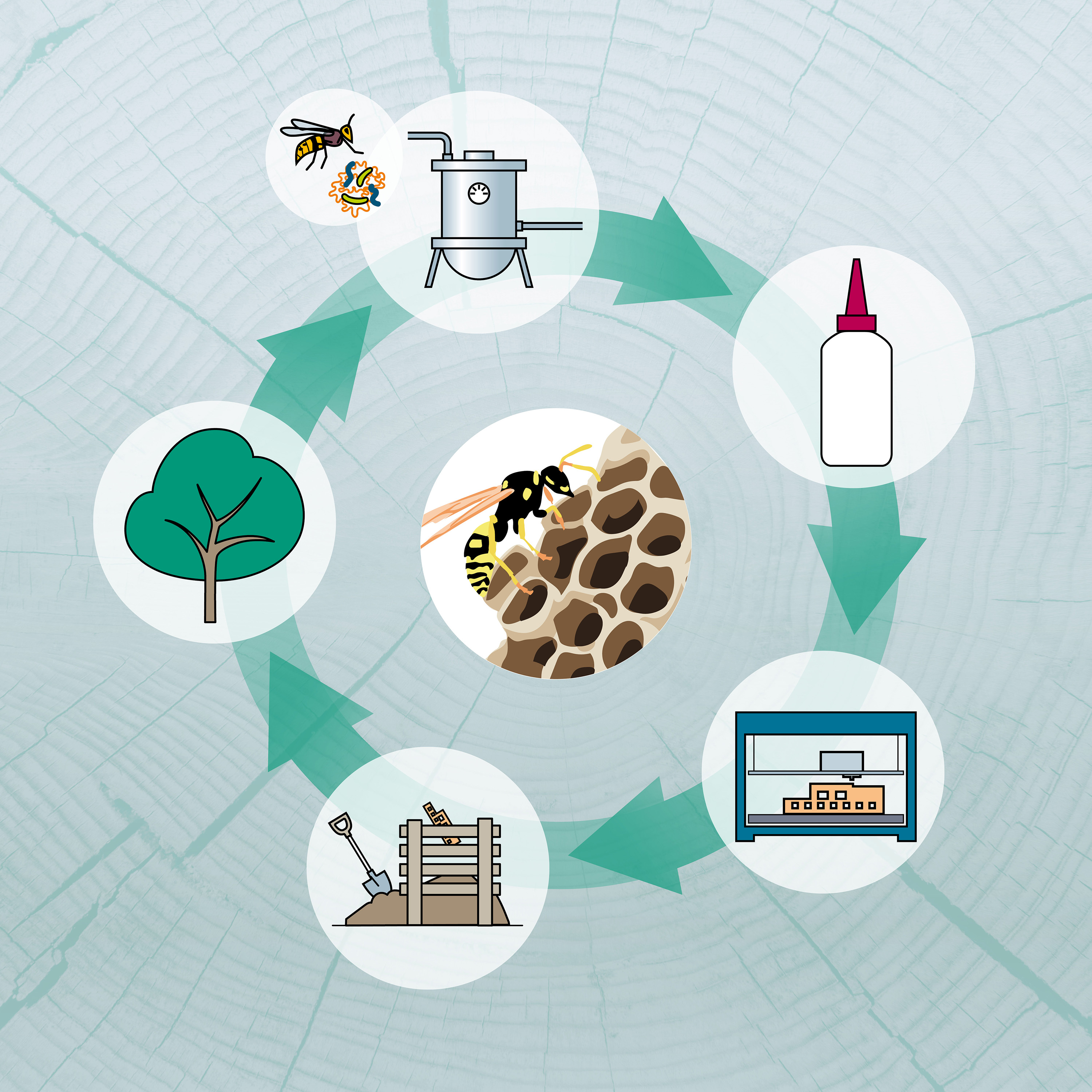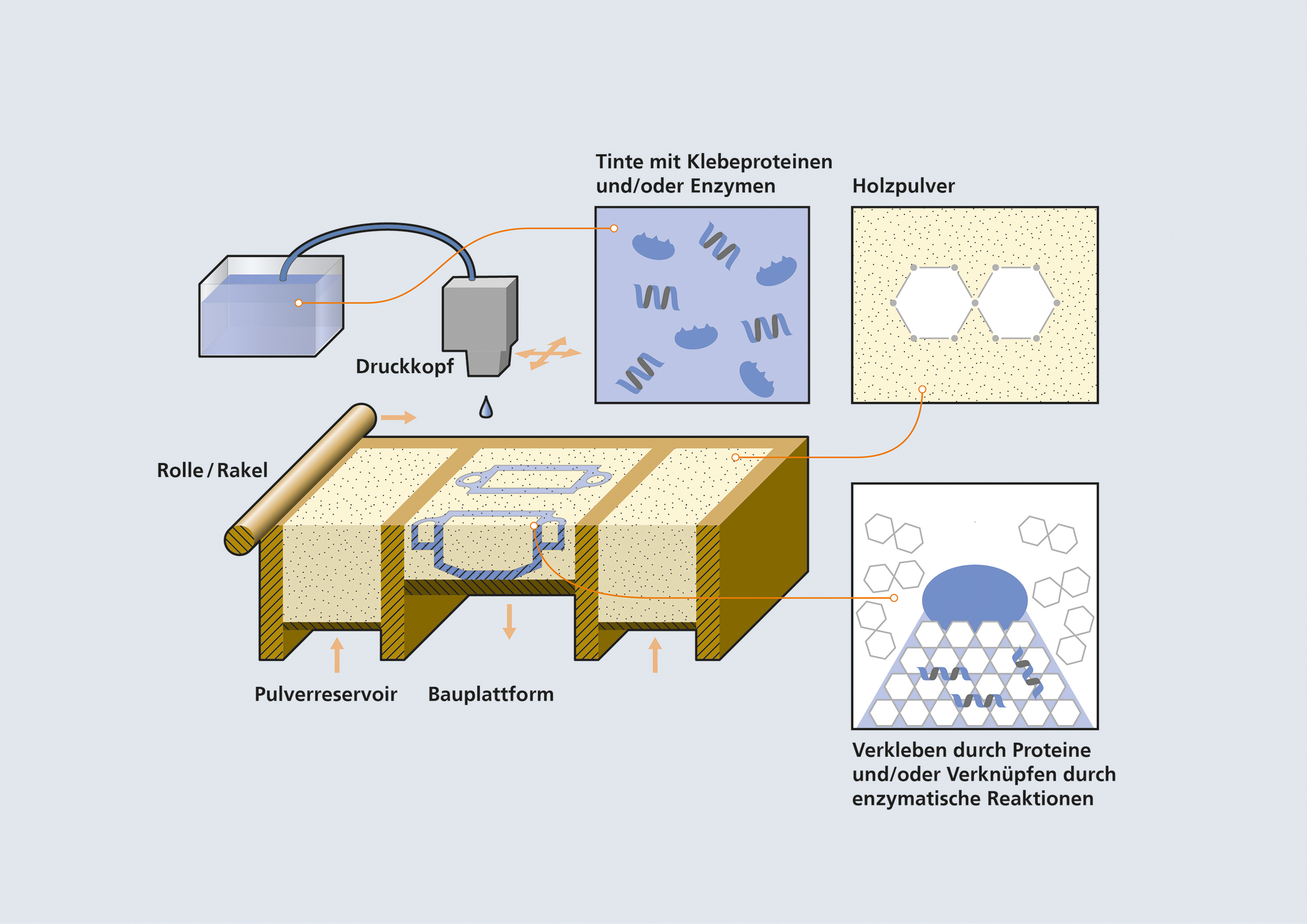Main navigation
Copied from insects: new biological wood binder under development
Plastic is all around us; and unfortunately, it is not going away any time soon. The effects on the environment are well known. The search for more sustainable solutions is fully underway, and proving quite successful. However, binders that degrade only with difficulty or not at all are still used to bond natural materials such as wood and straw. In other words, this is a solution that is not yet truly environmentally friendly. Fraunhofer researchers are working on an insect-inspired wood binder that makes bonded wood products both resistant and biodegradable.

A number of wasps and hornets build paper-like nests of astonishing stability. They do this by using their saliva to process gathered wood particles into an extremely light material with which they build complex honeycomb nests: architectural masterpieces - but probably completely underestimated by most of us when we carelessly dispose of these inconspicuous grey structures in the organic waste in autumn. It has now become clear that there is more to this amazing material than we think, as it has come to the attention of scientists who use nature as a model to develop new, sustainable products. The same goes for silk from caddisfly larvae, which produce a sticky liquid to build a waterproof, protective casing, strengthened with pieces of plants, stones or snail shells. The researchers' idea is to develop a biological wood binder from the enzymes and adhesive proteins used to build wasp nests and use it to process wood residues – for example from forestry waste – into new natural composite products using 3D printing. These would be fully biologically degradable and not consume any fossil resources.
Biotechnological production of adhesive molecules from insect saliva
The original idea of copying adhesives from nature has already turned into concrete research work in recent months: teams from the Stuttgart-based Fraunhofer Institute for Manufacturing Engineering and Automation IPA and the Gießen-based Fraunhofer Institute for Molecular Biology and Applied Ecology IME have been jointly developing the insect binder in the "DiscoverIWB - Insect Inspired Wood Binder" project since May 2023. The first step is to identify the adhesive molecules, which is the task of the Fraunhofer IME. "We want to find out how the wasps manage to produce such a weather-resistant and stable material," says Stephanie Eigner, a scientist in the Biointelligent Technologies working group at Fraunhofer IPA and, the technical contact person for the project, alongside Tobias Granse. "We assume that the insects have adhesive molecules in their saliva that bind the wood particles together to form the paper-like honeycomb nests. We want to imitate this and use it for a 3D printing process for wood known as binder jetting."
However, before it is possible to print with the wasp binder, the molecules in question must first be detected and characterised – their sequence determined – in the wasp saliva. This task is currently underway at the Fraunhofer IME: "The insects' transcriptome is being analysed for this, which is far from a simple job," explains Eigner. "That's why the project was started in spring, when wasps are building their nests, so that we have enough material available. In future, we won’t need the wasps, as we will be producing the binder proteins biotechnologically in bacteria as soon as we know more about these molecules."
Powder from previously unused wood waste as a starting material
The team wants to process the proteins produced in the laboratory into an adhesive suspension consisting of enzymes or adhesive molecules and a suitable liquid medium, very similar to the composition of insect saliva - in other words, to create optimal conditions for the biomolecules. This mixture of substances must not only be able to stably bond wood, but also fulfil certain flow properties so it can be processed with an inkjet printer. This development work is being done at the IPA: "As soon as we have the binder, we will produce an "ink" that can be printed, and plan corresponding tests with our measuring equipment," says Tobias Granse, a scientist at Fraunhofer IPA's Centre for Additive Manufacturing and an expert in inkjet printing.
But the Fraunhofer researchers in Stuttgart are not sitting around doing nothing while they wait for the insect ink: "We are currently carrying out squeegee tests with the wood powder. This is how the material will be applied later in the 3D printing process. In addition, various properties such as pourability and bulk density are being investigated. The aim is to be able to produce layers of wood powder that are as homogeneous as possible. We may also have to use additives. The tests over the next few weeks will show this."
Wood plus ink results in ecological, resource-saving objects
In the 3D printing process - binder jetting - the new biological adhesive ink will be used as a binder and selectively introduced into the respective wood powder layers in small drops via a print head using the inkjet printer. In this way, the wood powder particles are bonded together by the adhesive suspension and a three-dimensional component is created. This is then cured by drying the object at suitable temperatures.
In contrast to their current counterparts, the objects will then consist entirely of biogenic raw materials, meaning they will be completely free of chemicals and petroleum-based polymers. The final ink will be developed as soon as the insect proteins are available: "We are currently carrying out preliminary tests with the liquid medium that will make up the ink together with the proteins," says Eigner. "But a lot can still change, because the insect enzymes need to be dissolved in their active form and not precipitate under any circumstances. Whether they are then added directly to the ink or mixed into the wood powder as a protein powder will depend, among other things, on how soluble they are. And, of course, the mixture must ultimately be printable. This is now being tested piece by piece on a small scale."
Industry participation welcome
In principle, the aim is to be able to process all types of wood - in other words, to utilise forestry waste of all kinds. "We also believe that this is possible," says the biochemist. "After all, wasps also use different wood materials." As soon as the starting materials are available, the researchers want to produce test specimens for tensile tests and analyse their mechanical properties - and of course test whether the new material can stand up to comparison with conventional plastics.
DiscoverIWB will end in the first half of 2024. "If there is interest from industry, we would of course be very happy to follow up on a larger scale," says Granse. The researchers would also like to try out completely new ideas in the future, for example printing alternative materials such as fungus mycelium in three dimensions or using wood waste in injection moulding processes.
Info box: The "DiscoverIWB" project
Insect Inspired Wood Binder – Biologischer Holzkleber für den 3D-Druck
Duration: 1st May 2023 – 29th February 2024
Partners: Fraunhofer Institute for Molecular Biology and Applied Ecology - Giessen branch; Fraunhofer Institute for Manufacturing Engineering and Automation IPA, Stuttgart
Aim: To identify and extract previously unknown adhesive molecules from hornet saliva or silk from caddisfly larvae, so that a stable adhesive suspension can be produced from them and tested for its processing potential in combination with wood powder in 3D printing.
Funded by the Fraunhofer-Gesellschaft

